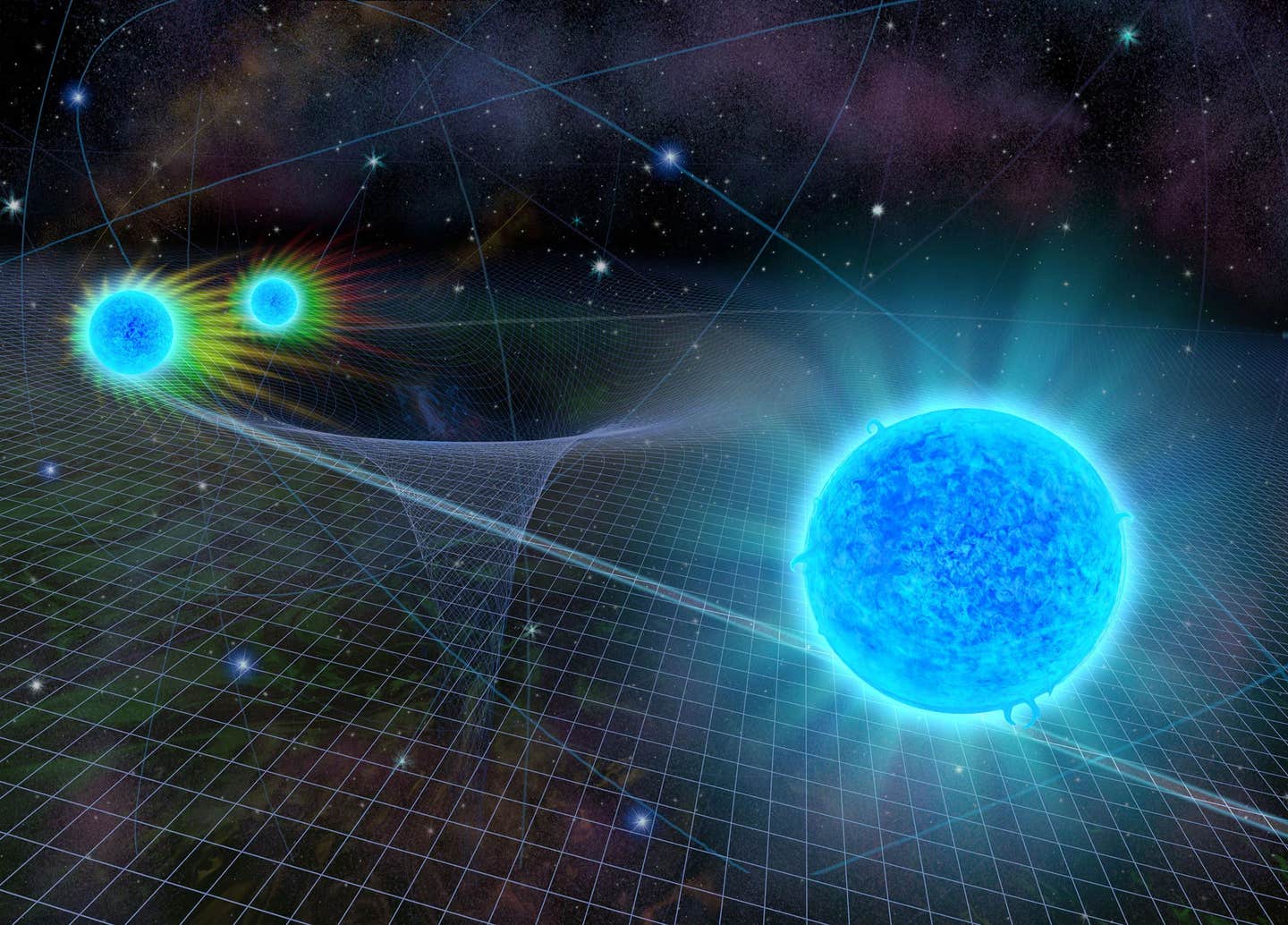Breakthrough research questions Einstein’s Theory of General Relativity
The accelerating expansion of the Universe, first observed in 1998, remains one of the most profound mysteries in modern physics.

Einstein’s equations by introducing two functions, μ and η, which describe changes in gravity and metric distortions. (CREDIT: Nicolle Fuller/National Science Foundation)
The accelerating expansion of the Universe, first observed in 1998, remains one of the most profound mysteries in modern physics. It challenges long-standing assumptions about the cosmos and has spurred decades of scientific investigation.
Scientists propose several theories to explain this phenomenon. Some attribute it to a cosmological constant, a fixed energy density filling space. Others suggest a more dynamic form of dark energy or even fundamental modifications to Einstein’s theory of general relativity. To test these ideas, researchers rely on extensive surveys of large-scale cosmic structures, mapping the distribution of matter and galaxies.
New Methods to Decipher the Universe’s Expansion
While the ΛCDM model has been a cornerstone of cosmology, it is showing its limitations as researchers seek to explain observations beyond its scope. Two major approaches are emerging to explore theories that extend beyond ΛCDM.
One approach focuses on broad theoretical frameworks, such as Horndeski theories, which integrate scalar-tensor models with second-order equations of motion. These theories aim to link observational data directly to underlying physics. However, they often involve significant degeneracies—overlapping effects among different parameters—making it difficult to draw precise conclusions from current datasets.
A second approach is more empirical, modifying Einstein’s equations with two key parameters, μ and η. These parameters describe deviations in gravity and metric distortions.
- μ accounts for changes in Poisson’s equation, influencing the behavior of gravitational fields.
- η measures discrepancies between time and spatial distortions, providing insights into how gravity behaves on cosmic scales.
These parameters are essential for interpreting gravitational lensing data from projects like the Dark Energy Survey (DES) and analyzing galaxy clustering from surveys like BOSS and eBOSS. By refining these methods, scientists hope to uncover new insights into the forces driving the Universe’s expansion.
Related Stories
Both approaches aim to move beyond current models, leveraging advanced observations to unlock the secrets of the accelerating Universe. This ongoing exploration promises to reshape our understanding of cosmology and fundamental physics.
However, this approach has its challenges. The constraints on μ and η are interdependent across different redshifts, requiring either a fixed evolution model or sophisticated reconstruction techniques. Moreover, the framework assumes the validity of Euler’s equation for dark matter, which introduces potential degeneracies that complicate data interpretation.
Pushing the Boundaries of General Relativity
Einstein’s general relativity revolutionized our understanding of gravity, depicting the Universe as a flexible fabric deformed by massive objects. This theory, confirmed by the 1919 solar eclipse, predicted the deflection of light by gravity, a phenomenon known as gravitational lensing. By studying how light bends around celestial bodies, scientists gain critical insights into the Universe's structure and expansion.
But are Einstein’s equations valid on the largest cosmic scales? Researchers from the University of Geneva (UNIGE) and Toulouse III – Paul Sabatier have sought to answer this question. Using DES data, they analyzed the distortion of time and space, comparing their findings to Einstein’s predictions.
Camille Bonvin, an associate professor at UNIGE, highlights the novelty of this approach: "Until now, Dark Energy Survey data have been used to measure the distribution of matter in the Universe. In our study, we used this data to directly measure the distortion of time and space, enabling us to compare our findings with Einstein’s predictions."
A Universe Slightly Out of Sync
The DES provided data on 100 million galaxies across four time periods: 3.5, 5, 6, and 7 billion years ago. These measurements revealed how gravitational wells—regions where gravity deforms space-time—evolved.
According to Isaac Tutusaus, lead author of the study, "We discovered that in the distant past — 6 and 7 billion years ago — the depth of the wells aligns well with Einstein’s predictions. However, closer to today, 3.5 and 5 billion years ago, they are slightly shallower than predicted by Einstein."
This discrepancy coincides with the period when the Universe’s expansion began accelerating. The data hint at a possible link between the two phenomena, suggesting that gravity might operate differently on cosmic scales. Tutusaus notes, "The slower growth of gravitational wells and the accelerating expansion might share the same underlying cause."
The 3-Sigma Challenge
The study found a 3-sigma level of incompatibility between Einstein’s predictions and the observed data. While this is significant, it falls short of the 5-sigma threshold needed to definitively challenge the theory. Nastassia Grimm, a co-author and postdoctoral researcher at UNIGE, explains, "Such an incompatibility threshold arouses our interest and calls for further investigations. But this incompatibility is not large enough, at this stage, to invalidate Einstein’s theory."
Further research is necessary to confirm these findings. The team is turning to the Euclid space telescope, launched last year, which promises more precise gravitational lensing data. Over its six-year mission, Euclid will observe 1.5 billion galaxies, offering unprecedented insights into the Universe's history and allowing scientists to test Einstein’s equations more rigorously.
As cosmologists delve deeper into the mysteries of the Universe, the boundaries of established theories are being pushed. The work of the UNIGE and Toulouse teams represents a critical step in this journey.
With upcoming data from Euclid, the scientific community is poised to refine its understanding of gravity and cosmic expansion. These efforts may ultimately reshape our perception of the Universe, bringing us closer to solving one of science’s greatest enigmas.
Note: Materials provided above by The Brighter Side of News. Content may be edited for style and length.
Like these kind of feel good stories? Get The Brighter Side of News' newsletter.
Joshua Shavit
Science & Technology Writer | AI and Robotics Reporter
Joshua Shavit is a Los Angeles-based science and technology writer with a passion for exploring the breakthroughs shaping the future. As a contributor to The Brighter Side of News, he focuses on positive and transformative advancements in AI, technology, physics, engineering, robotics and space science. Joshua is currently working towards a Bachelor of Science in Business Administration at the University of California, Berkeley. He combines his academic background with a talent for storytelling, making complex scientific discoveries engaging and accessible. His work highlights the innovators behind the ideas, bringing readers closer to the people driving progress.



